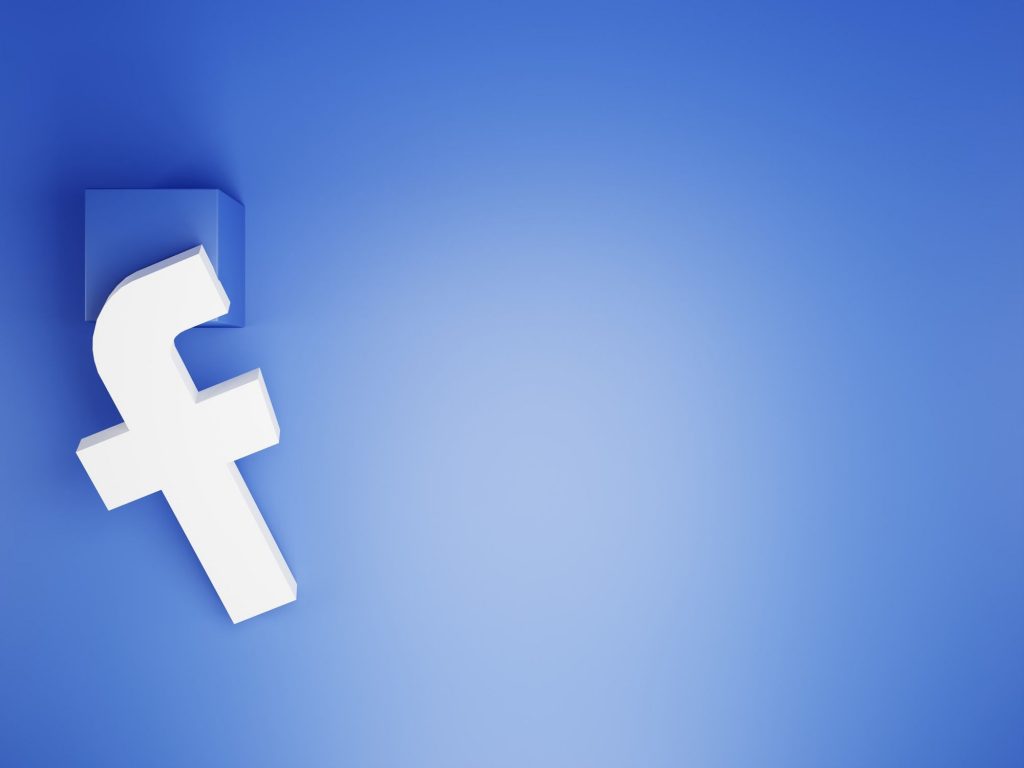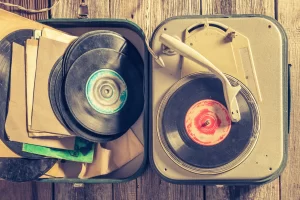If you’re a musician, Facebook is one of the best platforms you can use to market your music. You can create a page for your brand, share your music and videos, and sell tickets to your upcoming shows. But that’s just the beginning. Facebook also has a powerful advertising platform that you can use to reach new fans and promote your music.
In this complete guide, we’ll show you how to use Facebook Ads to grow your fan base and sell more tickets. So let’s get started!
What are Facebook Ads?
Before diving into how to use Facebook Ads for musicians, let’s first take a step back and define what they are. Facebook Ads are a type of online advertising that allows you to target a specific audience with your message. When someone sees your ad, they can click on it and be taken to your page or website.
Like many advertising platforms, Facebook works on a PPC (pay-per-click) model. This means that you’ll only pay when someone actually clicks on your ad. You can set a daily budget for your ad, and Facebook will ensure you don’t exceed it.
You can use many formats for your Facebook Ads, including images, videos, and carousels (a type of ad that includes multiple images or videos that people can scroll through). You can also use text-only ads, but these are less effective than other types.
Why Use Facebook Ads?
There are several reasons why you might want to use Facebook Ads as a musician. Here are a few of the most important ones:
You can target a specific audience.
Facebook has a massive amount of data on its users. This data includes information like their age, location, interests, and even the music they listen to. It allows you to create ads targeting the people most likely to be interested in your music.
For example, let’s say you’re a metal band from the United States. You could use Facebook’s targeting options to show your ads to people in the U.S. and/or to those interested in metal music. This process is much more effective than just hoping someone who likes your type of music will randomly stumble across your page.
You can reach a large number of people.
Facebook has nearly 3 billion active users, so there’s a good chance that your target audience is on the platform. And with Facebook Ads, you can reach them all with your message.
You can track your results.
When you run a Facebook Ad, you can track how well it’s performing. Tracking includes how many people saw your ad, clicked on it, and how much money you spent. This data is valuable and can help you improve your future ads.
How to Use Facebook Ads as a Musician
So, how can you use Facebook Ads to grow your fan base and sell more tickets? Let’s take a look at some of the best strategies.
1. Create an Engaging Page
The first step is to create a target page for your ads. This page can be your band’s Facebook page, your website, or even a landing page specifically for your ad campaign. After all, you need somewhere to send people when they click on your ad.
When creating your page, there are a few things to keep in mind:
- Make sure your page is up-to-date and accurate. This includes things like your bio, contact information, and tour dates.
- Use high-quality photos and videos. People are more likely to engage with your page if it looks professional.
- Use calls to action. Tell people what you want them to do, such as listen to your music or buy tickets to your next show.
- Engage with your audience. Respond to comments and messages in a timely manner.
This page will be the first impression that many people have of your band. So take the time to create something you’re proud of that will make people want to learn more about you.
2. Identify your marketing goals and audience
Before you create your ad, you need to know what you want to achieve. Most musicians use Facebook ads in the following ways:
Create brand awareness: Use ads to introduce people to your band who might not have heard of you before.
Grow your fan base: Use ads to get more fans interested in your music.
Sell tickets or merchandise: Use ads to sell tickets to your shows or promote your latest album.
Sell branded merchandise: Use ads to sell branded merchandise, such as t-shirts and hats.
Think long and hard about what you want your ad to achieve before selecting a goal. On Facebook, you’ll see three main goals to choose from: Awareness, Consideration, and Conversion. You can also choose from several different sub-goals, such as reach, traffic, app installs, video views, lead generation, messages, and more.
Doing so will help you create a tailored ad that’s more likely to help you achieve your goal. It will also make it easier to develop future ads, as you’ll know what worked and what didn’t. But identifying a goal is just the first step. You also need to identify your target audience.
Think about who your ideal fans are and what they’re like. What age are they? Where do they live? What kind of music do they like? The more specific you can be, the better. With Facebook’s Lookalike Audiences tool, you can find people who are similar to your current fans.
It’s also important to keep in mind that where you send your fans also matters. Make sure to avoid pointing your ads directly to streaming links as this often gets artists wrongly banned for artificial streaming by stores.
3. Create a compelling ad
Now it’s time to create your ad. And there are a few things you need to keep in mind if you want it to be successful. First, make sure your ad is visually appealing. Use high-quality images or videos that will catch people’s attention. You can also use Facebook’s creative tools to create an eye-catching ad.
However, most artists outsource the creation of their visuals to a graphic artist. This is because it’s important that your ad looks polished and professional if you want people to take you seriously. In the case of videos, you may want to hire a videographer to create a high-quality video for your ad.
Second, write a headline that’s clear and to the point. People should understand what your ad is about without reading the whole thing. And finally, make sure your ad speaks to your target audience. Use language that they’ll relate to and focus on things that are important to them.
Copywriting is an art form in its own right, so if you’re not confident in your ability to write a compelling ad, it’s worth hiring a copywriter to do it for you.
Short and snappy is best when it comes to ad copy. Facebook users have short attention spans and see dozens of ads daily. You need to make your point quickly and effectively. Use an active voice and avoid using jargon. And remember to include a call to action, such as “listen now” or “buy tickets.”
4. Choose your ad format
As mentioned above, many different types of Facebook ads exist, so choosing the one that best suits your goals is essential.
A video ad is an excellent option if you want to increase brand awareness or grow your fan base. Video ads are some of the most popular and effective Facebook ads. People are more likely to watch a video than read a text-based ad, so you’re more likely to capture their attention.
If you’re selling tickets to a show or promoting your new album, a carousel ad is a good option. Carousel ads let you showcase multiple images or videos in a single ad. They are perfect for promoting numerous products or showing off different aspects of your music.
You can also use carousel ads to tell a story. For example, you could use them to show the journey of your new album, from the writing process to the recording process to the final product.
Lead ads are the way to go if you’re looking to generate leads. Lead ads let people sign up for your mailing list or download your new single without ever having to leave Facebook. They’re easy and convenient, which makes them more likely to convert.
5. Set your budget and schedule
Once you’ve created your ad, optimized your audience, and chosen your ad format, it’s time to set your budget and schedule.
When it comes to setting a budget for your ad, you need to consider how much you’re willing to spend per day and how long you want your ad to run. You also can set a lifetime budget for your ad, meaning that you’ll never pay more than the specified amount.
The amount you’re willing to spend will depend on your goals for the ad. For example, if you’re looking to generate album sales, you’ll need to be prepared to spend more money than if you’re just trying to get some likes on your page.
It’s also important to consider how long you want your ad to run. If you’re promoting a one-time event, such as a concert, you’ll only need to run your ad for a few days pre-event. However, if you’re looking to grow your fan base, you’ll need to run your ad for longer.
A perfect balance of budget and time is key to a successful Facebook ad campaign.
6. Choose your ad placements
After you’ve set your budget and schedule, you need to choose where you want your ad to be shown. Facebook allows you to show your ad on the news feed, marketplace, right column, messenger inbox, Facebook Stories, and more. Each of these placements has its own strengths and weaknesses, so you must choose the one that best suits your goals.
You might also want to consider boosting your post. When you boost a post, it is essentially an ad for that specific post. You can choose how long you want the post to be boosted and how much you’re willing to spend. Promoted posts look more organic than other types of ads, so they’re less likely to be ignored.
7. Monitor your results
Once your ad is up and running, it’s important to monitor your results and make changes as needed. You should keep an eye on your reach, frequency, impressions, clicks, and conversions. If you’re unhappy with your results, you can always adjust your budget, schedule, audience, or ad format.
It’s also important to keep in mind that Facebook ads are a long-term investment. You might not see results immediately, but if you stick with it, you will eventually see the fruits of your labor. A/B testing is also a good way to see what works and what doesn’t. It consists of creating two similar ads and changing one small element, such as the headline or call to action. You can then see which ad performs better and make changes accordingly.
Then, take the best-performing ad and repeat the process. This will help you fine-tune your ad and eventually create a highly successful campaign.
What About Instagram?
As Facebook’s sister platform, Instagram offers many of the same advertising opportunities as Facebook. However, there are a few key differences. Instagram is primarily a visual platform, so your ad should be highly visual. Photos and videos are more likely to perform well than other types of content. You also have the option to create carousel and Instagram Stories ads, which can be very effective.
Another key difference is that Instagram ads are less interruptive than Facebook ads. They blend in more with the rest of the content on the platform, so users are less likely to get annoyed by them. Other than that, the process for creating and managing Instagram ads is very similar to Facebook ads.
Conclusion
Facebook Ads can be a great way to promote your music and grow your fan base. You must be prepared to commit time and money to your campaign to see results. But if you’re willing to do the work, Facebook Ads can be a powerful tool for taking your music career to the next level. Check out some of our other articles to learn more about music promotion and distribution.
Novecore is a music distribution platform that can help you get your music career off the ground. With Novecore, you can distribute your music to all major streaming platforms and reach more fans. Sign up for free today to see how we can help you reach your goals.




